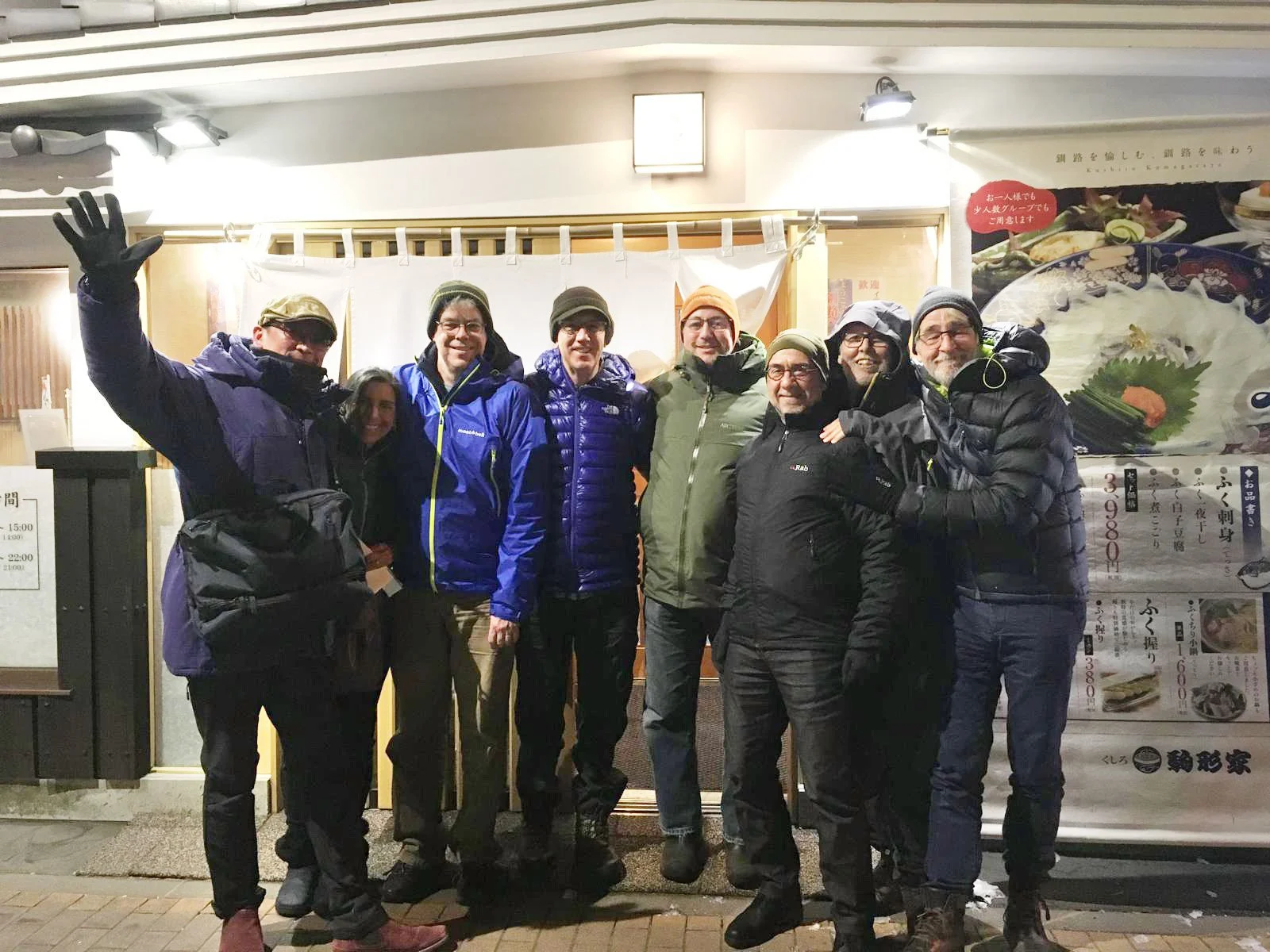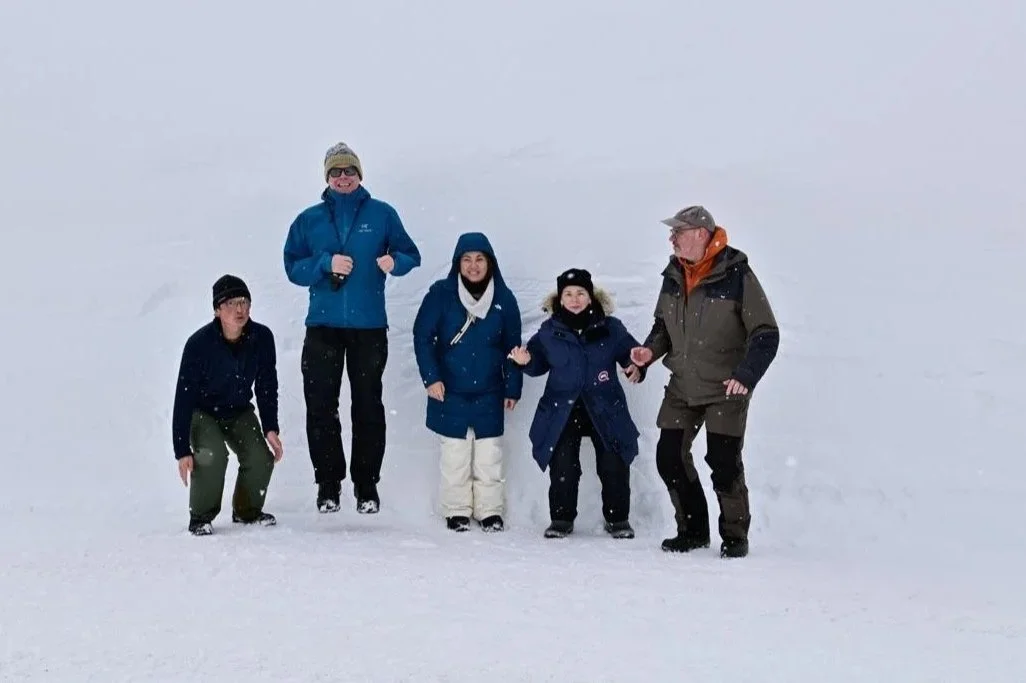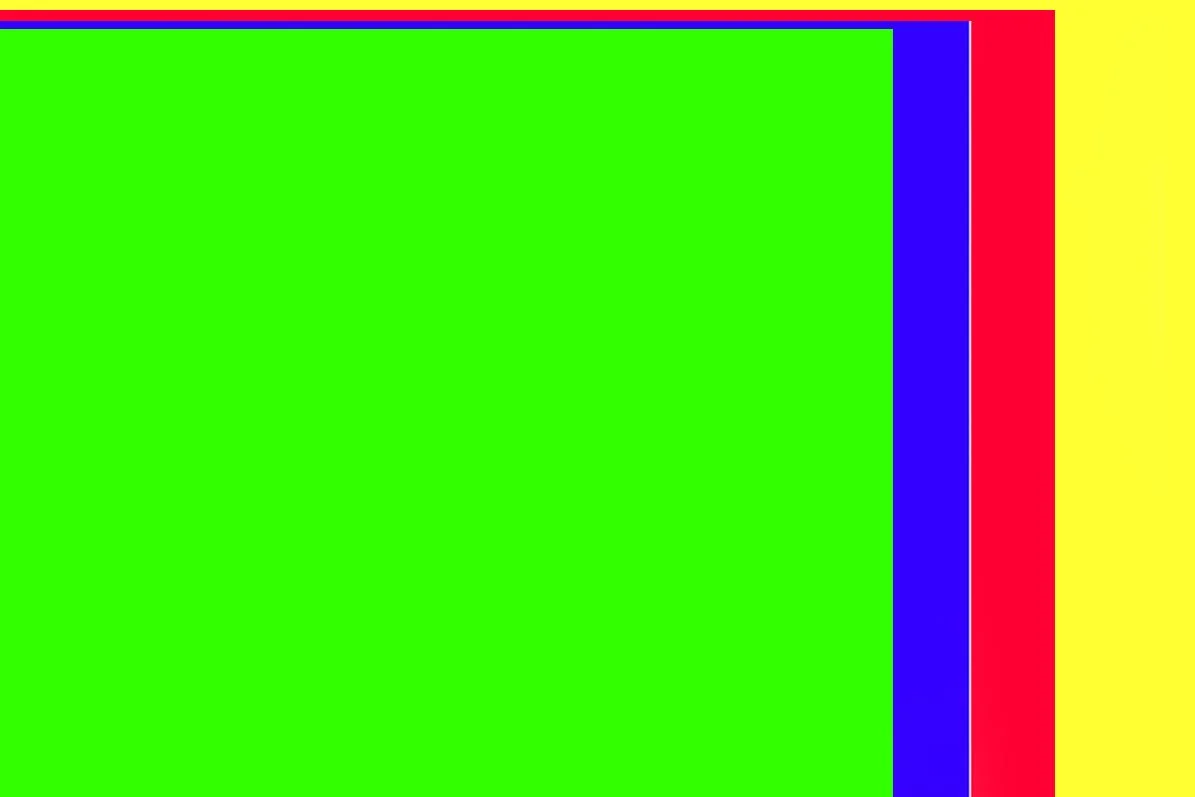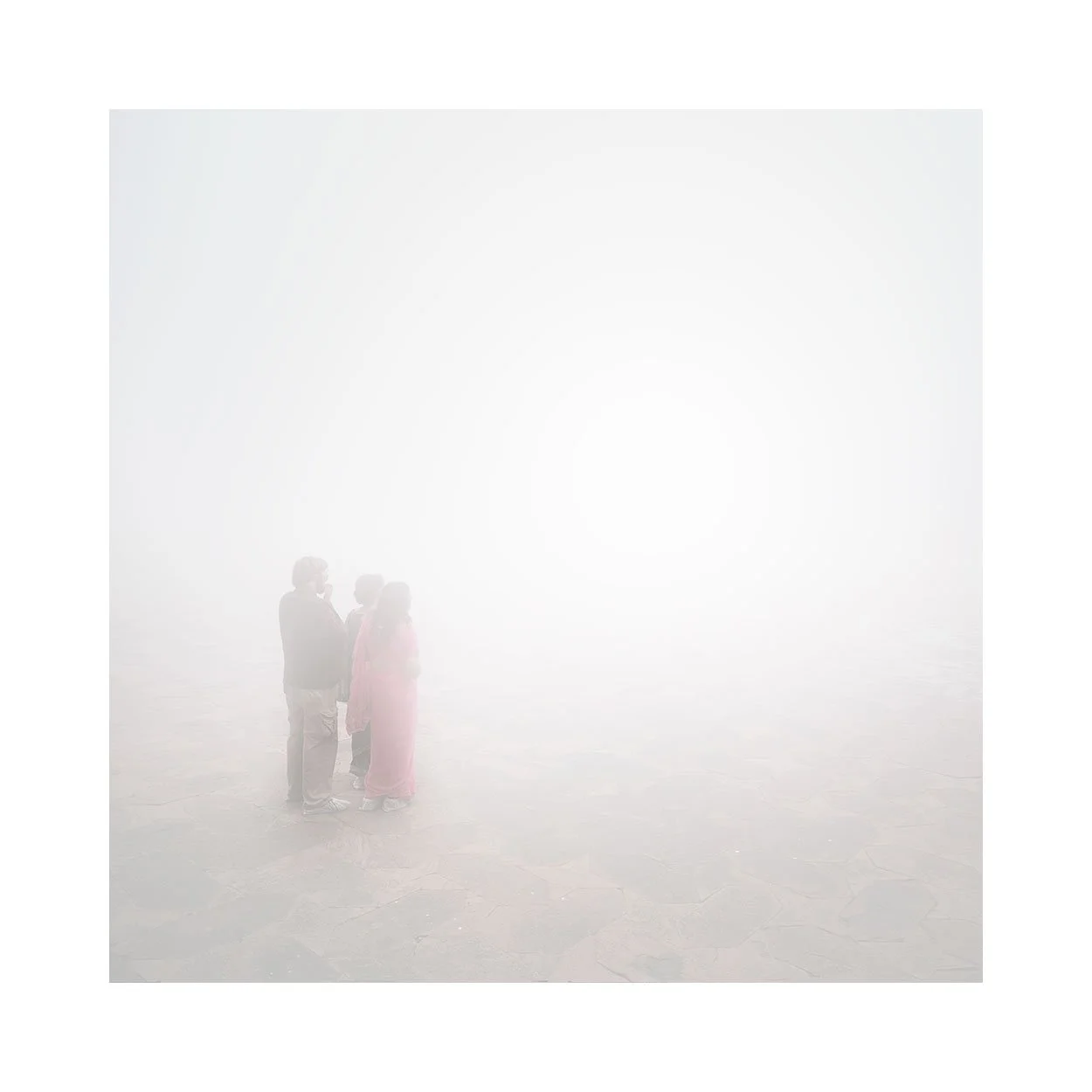This week I am back in Japan. I have just spent some time with my friend and guide Tsuyoshi Kato. We first met in 2015, and I did not know, that I was the first guy to run a photography tour with him. Tsuyoshi is great friends with Michael Kenna, and while I drove Michael around Scotland in 2015, he was very kind to give me Tsuyoshi’s details.
Tsuyoshi has been one of the best guides I’ve ever worked with.
This week, I am feeling nostalgic after him showing me so many photos of our times together.
Tsuyoshi Kato, Jeaninne, myself, Rick, Steve, John, Peter & Steve. I think this was tour 2019.
Each day, I remind myself of the gratitude I have for what my photography has given me. I try my best these days, to practice a 10 minute ‘gratitude’ moment when I wake up. I know it might sound rather ‘hippy’, but I have found that sitting still for 10 minutes and thinking about the positives in my life, have been very beneficial to how I am thinking about my life.
Had someone said to me, that the simple act of taking up an interest in photography, and buying a camera would have given me all the experiences i”ve had so far, I would not have believed them. I am very grateful indeed for my photographic life.
It’s not really about the photos. It’s really about the experiences and memories, paticularly with people I meet. Less so with the landscapes I visit, although that is often very special.
The truth is: it’s all about the human connection.
I do not remember where I read it, but back in the early 2000’s when I was a keen enthusiast, I read some quote somewhere that said “a camera is a passport to gaining experiences”. I paraphrase here.
I am grateful for where my camera has taken me, and for whom it has put me in contact with. Not only have I met so many beautiful landscapes, I have also made many friends along the way. Ones that, had I stayed in a regular job in Scotland, I would not have met.
That is what I think is so inspiring about photography.
I’m very grateful for finding photography in my early 30’s. It has given me so much.
Aomori, January 2025. Tsuyoshi Kato, myself, Anna, Ulana & Geoffrey. Standing in front of a snow wall that is about 14 feet high.













